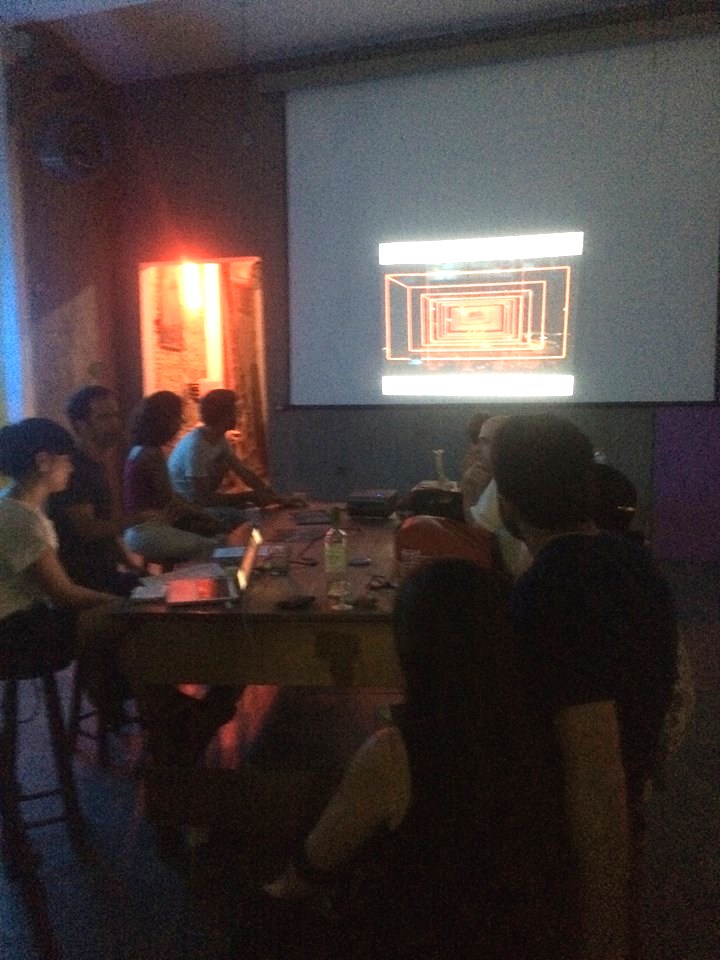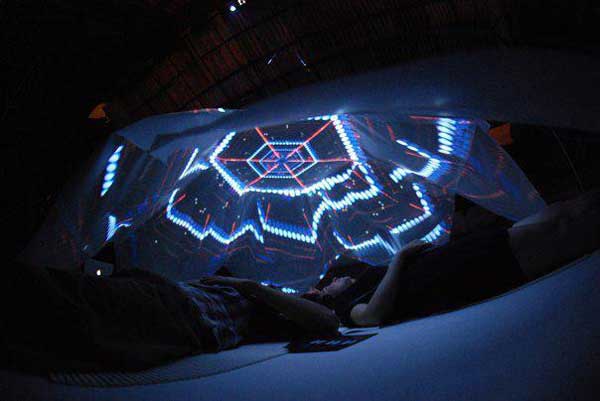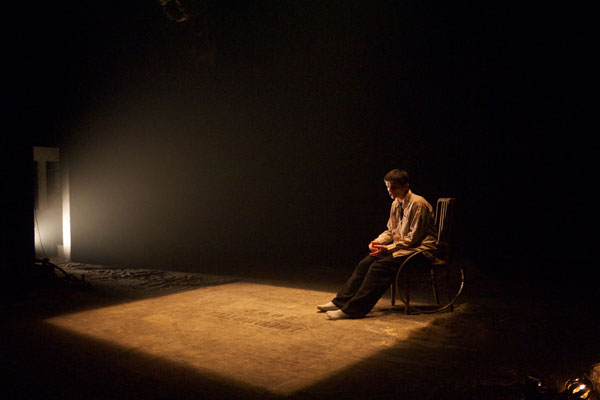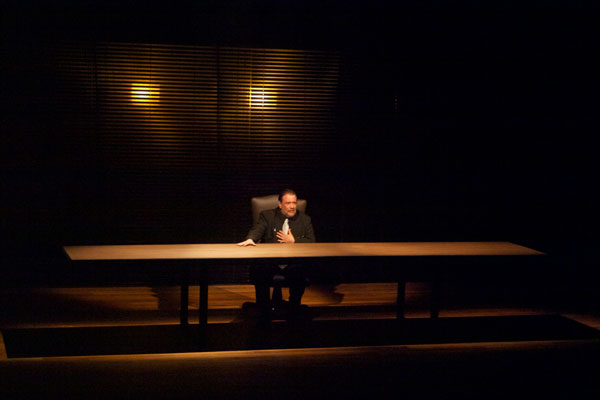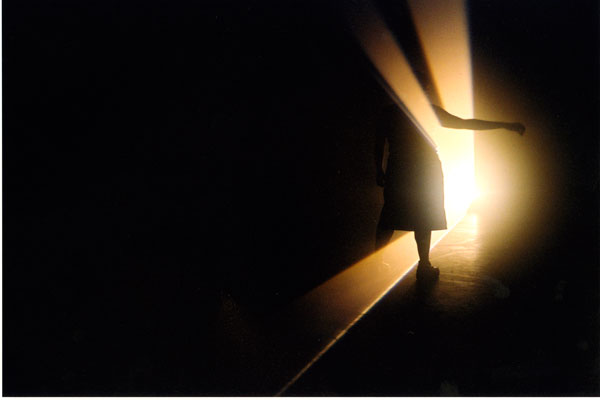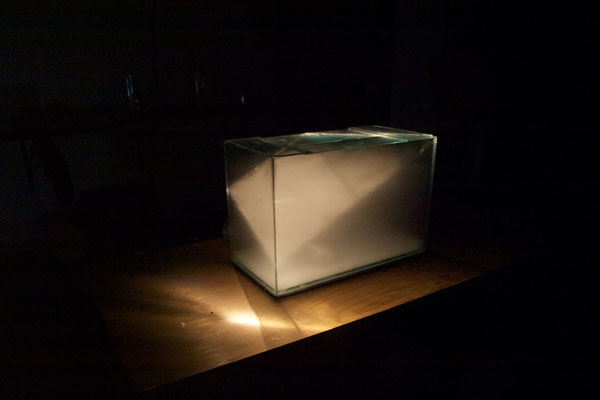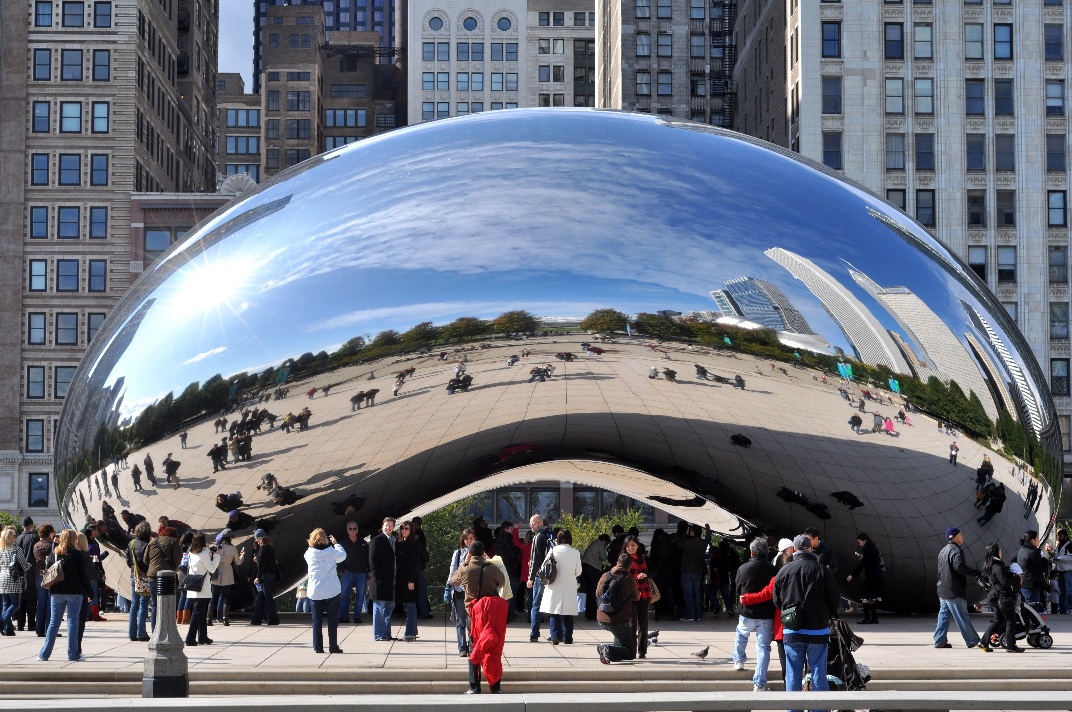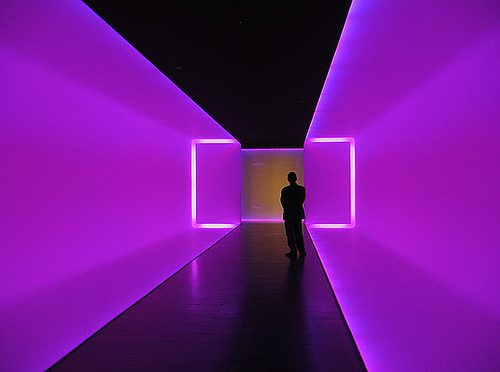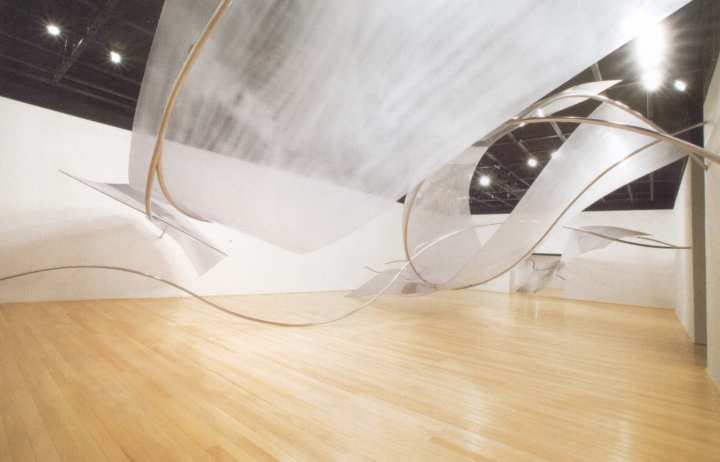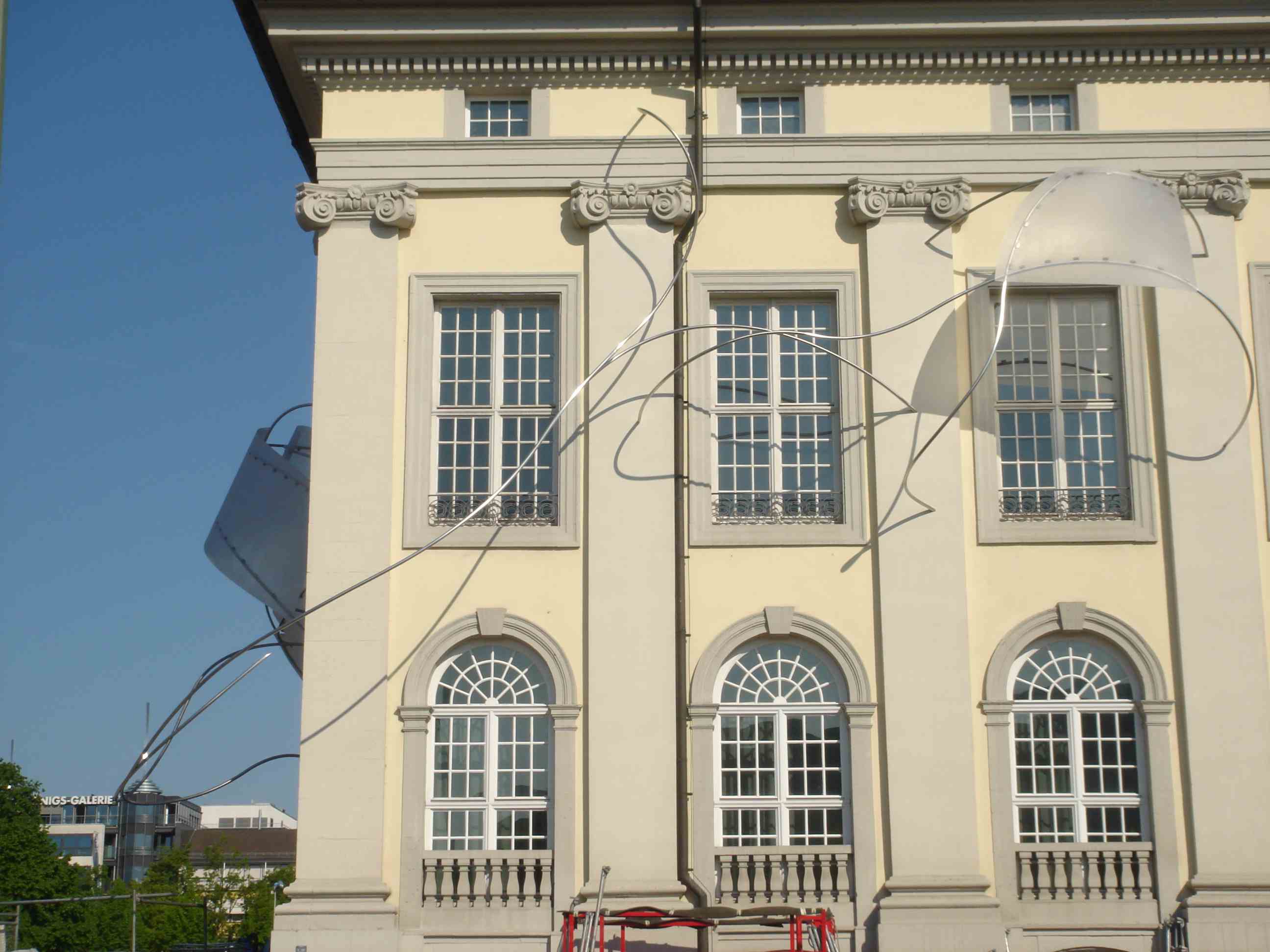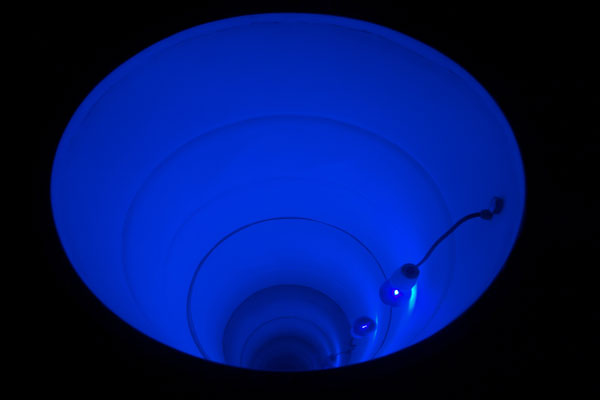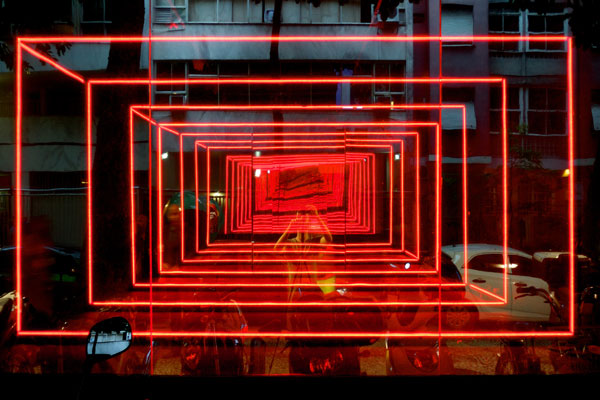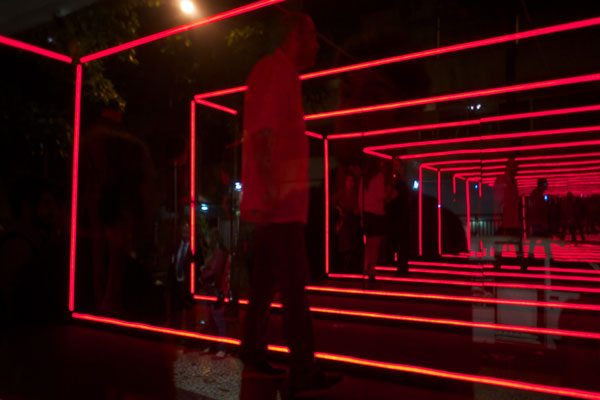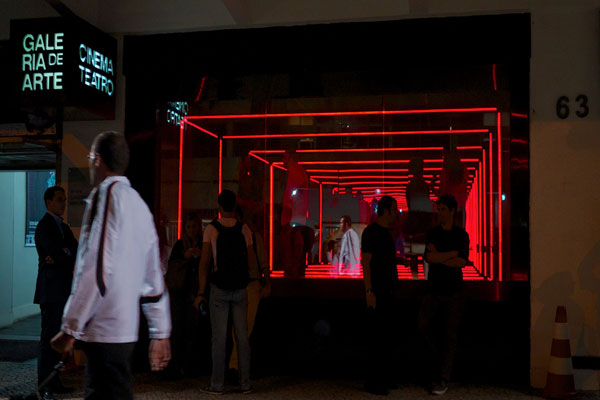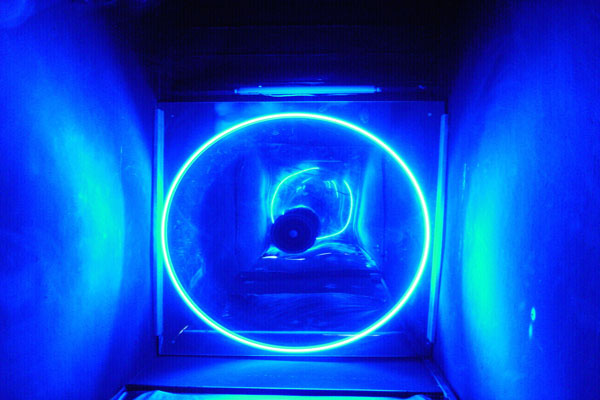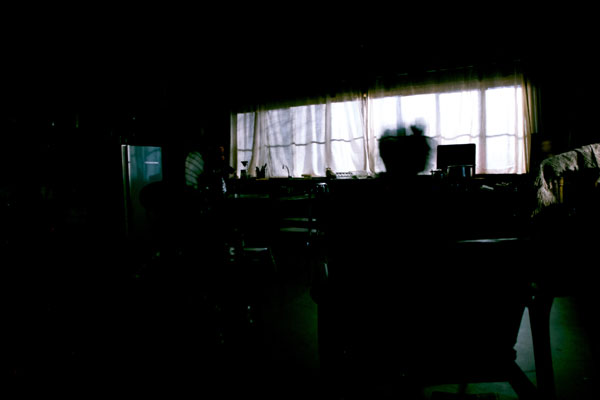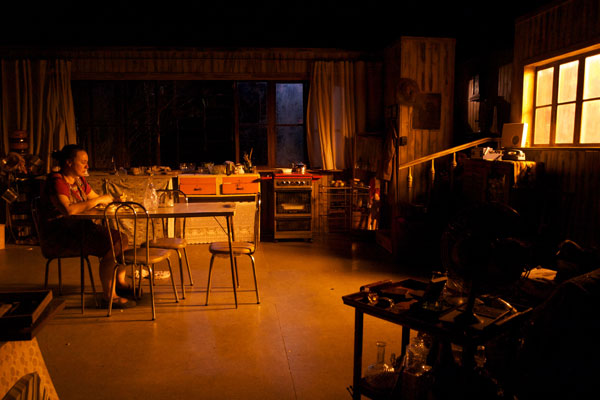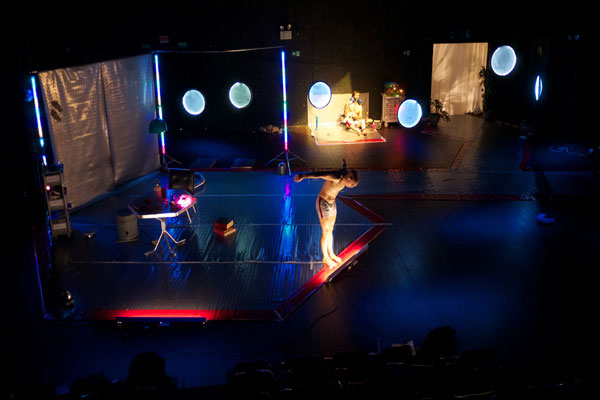Good evening, I am Manoela Bowles, curator and coordinator for Espaço Apis’ residency programme. Today we have the light artist Tomás Ribas in a pilot residency we aim to develop into a major residency programme here. Espaço Apis exists since 2003 when my mother, Patricia Bowles, visionary and founder, incorporated this building to become an art centre. She has always dreamed of providing educational activities here to integrate the community. Focusing on this intention we will offer a workshop for kids on the 22nd of March and invite children from around the area.
This residency project is educational in the sense of opening to new perceptions of the world, new perspectives, and light has the power to open to new dimensions.
The idea to work with light has always fascinated me because its a material that is always present in our lives, it is the source of all life, fundamental for existence. From being the energy that makes plants grow, etc, to also being what makes us see and understand things. It is our guide, a code, a language that we use to comprehend, read and write the world. Because depending on the angle we see things they lighten up and their meaning can change, without mentioning the colours that also have meanings, patterns of signifiers we carry to communicate.
It is not necessary to have any art history knowledge to understand the work with light, it is experiential, of immediate experience, open to all.
Thats why I have always wanted to evolve into something with Tomás, since 2009 when we worked together in his exhibition Contrivances, in Lavradio street here in Lapa, that I saw the potential of light to involve all through art, and became interested in expanding this potential in experimental projects.
In 2011 I invited him to participate in II II II, an exhibition I held here in Apis with the artist collective Moleculagem. They created an audiovisual and immersive installation that used 3D mapping projections and sound to take the viewer in a journey through space and time where perception was tested and consciousness awakened. Unfortunately he could not participate at the time. Now we have the opportunity to work together in this residency where I aim to follow my curatorial line of practice. I have been developing this theme since the thesis I wrote for the Masters in Art Criticism at the Autonomous University of Barcelona about the power of art to bring to an emancipation and show that we can see beyond pre-fixed patterns of understanding and expand our perception.
The installation was an allegory to Plato’s Cave to show that our senses filter our perception, and that many times what we see and feel is not real, it is just an illusion created by the manipulation of our senses.
People laid down inside an igloo that seemed like a cave, each one had their own headphone and were totally involved by the mapped projections to create the sensation that they were in a moving space, it seemed they were going into tunnels, going faster, slower, falling, ascending, in a journey through abstract images that opened to another dimension of reality. To try to prove that reality is a construction of ou mind, time and space are mental creations created to apprehend the world as we created and bring the understanding that we can recreate is as we like.
Bring into consciousness that there are certain codes and languages that are conventions invented to read the world. Like in Tomás’ works, he uses light to contextualise when he is designing the light for theatre plays, creating narratives and ambience with light.
As a light designer Tomás has just won the Cesgranrio prize for best lighting for the play Moi Lui. In the end of last year he presented the piece Tunnel, a light tunnel that reflects infinitely, at Cândido Mendes gallery in Ipanema. During the residency at Espaço Apis Tomás will be preparing himself for a big exhibition at Parque Lage in April.
M: Tomás, tell us a bit about your work with light in theatre, you worked with a famous light designer, Maneco Quinderé, what have you learned about using light to contextualise, create ambience, can you summarise a bit about the beginning of your career and give some examples of how you used light to generate content in certain plays?
T: There is no university for lighting, everything you learn is by working with someone, so I worked as an assistant for Maneco for eight years. He does lighting for theatre, concerts, architecture, etc. So I learned how to do many different things.
T: In one of the stage sets for Moi Loui I used a light design of a rectangle to delimitate the space of the room.
M: Creating a more introspective atmosphere, since it was a dreamlike play.
M: And there is the technique behind all that magic.
T: When you work as a light designer you learn a lot of technique, from carrying the staircase to coordinating people who will be carrying the staircase. When I left the work with Maneco I started to create more projects.
M: At the same time Tomás uses pre-established meanings to direct the understanding of the spectator in a certain way, he can also direct the understanding using light to create new meanings, using light as a code to generate new languages inside a play. Like with colours, for example, we are already used to a certain meaning that that colour represents, but everything can change.
T: On this version of Antígone, I used some light reflectors where the light went directly into peoples eyes and it had a sort of rigid geometry to represent oppression, it reminded me of a Nazi movie.
M: Exactly, Nazism had great techniques to create a sense of grandiosity, etc
T: Yes, the light directed into people’s eyes has a lot of power demonstration, like with the police for example.
T: In these experiences of mine with ellipsoidal reflectors I discovered the potential to cut light using smoke and decided to develop this in a short course I did with the artist Iole de Freitas at Parque Lage. That’s where Wall came from, when I tried to make light appear solid with smoke and a reflector.
M: You created a sculpture of light.
T: At the time I studied a lot of Amílcar de Castro’s work, and I tried using the cut and fold technique he invented, but with light. So, the same way he got a iron flat surface and folded it t o become a tridimensional object, I used reflection to do that, with light and mirrors.
M: This work bears the question of “touching” light, which is immaterial, and make it have a physical appearance. A lot of people that went inside the room thought that the light was a cloth of some kind and did not realize it was made of light because they were not used to seeing light with a material appearance. To see this work you need a moment inside the dark room so you can calibrate your eyes to see.
M: It would be great if you could say something more about your apprenticeship with the artist iole de Freitas, about the relation space has to the work, the spectator’s experience in space, that comes a lot from the Neoconcretism movement as well.
T: This work specifically has a connection to Neoconcretism, it is a very formal work. The light was white, from a halogen lamp. This picture shows how it could be crossed.
M: This strong focus of light is usually used in concerts, but since it is in the show context people just don’t pay attention to the light itself. Here you show another possibility for the same kind of lighting.
T: In concerts we always see exactly that but there is no questioning wether it is solid or not, in these shows we are used to see light drawn into space. Not only did I decontextualise but also cut the light in a different way.
T: This Fish Bowl is one of the pieces that was on the exhibition we did together, Contrivances, its a work of light and water, sort of like a model for Wall, there’s a light reflector that throws light all around the fish bowl which has just a thin cut that lets the light go through so the plane appears inside the fish bowl.
M: One of Iole’s influence in Tomas’ work, which interests me the most, is the question of space. On Tomas’ work Tunnel, he creates new spaces with this infinite reflection, illusory spaces, that don’t exist but we see them, so actually they do exist in a certain way. Michel Foucault has a theory of Heterotrophic spaces, which are there parallels spaces that exist in reality. This work by Anish Kapoor, Cloudgate, also generates a heterotrophic space, it was placed in a very popular square in the centre of Chicago. With the reflective surface people could see into a new dimension, a new illusory space. In Tomas’ piece, it was in the gallery but anyone who went by could look into it and be transported into another space, a new dimension.
M: This is a work by James Turrell, a great light artist, he also creates these light surfaces. You also need a time to get your retina used to the light so you can see it better. His pieces are usually very contemplative and the more you stay with the piece the more you see.
M: This other piece is by Iole de Freitas in which she makes the viewer create mental spaces in his head in order to see the piece as a whole, because it exists inside and outside of the gallery you need to recreate it in your head.
T: In my work Tunnel I thought a lot about James Turrell. I was inspired by a work I saw in a gallery in Paris that was a rectangle cut into the gallery wall where some dim red light appeared behind it, from inside the wall. I was intrigued and decided to put my head through the hole to see how he had done it, but there were no equipment there to see, I could not see where the light came from. So I stretched my arm inside the hole intending to touch the wall and have a certain sense of where it was, but I could not reach it. At that moment I realised that I didn’t know if it was 10cm or 10m from my fingers. There was no shadow to make it able to recognise any surface. It was as if it was only colour, with no support. For me, that rectangle was like a hole into a new dimension, where colour lived. Then an insight came to me when I remembered Iole’s façade piece, where the façade was part of her work as well. Then I started to see the connection between Turrell’s work and space, it came in another way. It was like as if the space of the gallery was inside the space of the city, inside the space of the world and so on, and inside that gallery there was a hole that lead to a completely different dimension where only colour existed.
M: Tomás’ Barrel piece also has a bit of that, it opens a hole on the floor, as if you have your own rabbit hole from Alice at home!
T: In Tunnel the work is set to be turned to the street and I wanted the people who went by that street to have a connection with another dimension.
M: This picture of the work is very interesting because it shows the reflection of the image of people who were going by, inside the piece. So they become part of the illusory space as well. These are parallel universes that exist.
M: So, you had the intention to cause a questioning of people’s perception with this piece right?
T: I think that all the works I do have a bit about showing that not everything you see is real. This infinite reflection for your eyes is real, but the size of the room is not the size it appears to be from the perspective of who is going by the street and looking into the gallery, into the piece. The Wall piece too, you look at something that has an appearance of being solid but it is not. But they are not less real because of that.
M: Light shows what we see and interpret as reality. Light defines a lot of things and models our ways of seeing, even f we don’t realise it. For example, there are micro shadows that give objects their appearance of depth and so on. These are things we want to show by directing the viewer’s attention to these things that make us see the world the way we see and we mostly don’t pay attention to them.
T: We interpret what we see really fast and take it as reality, but actually it is only one interpretation, a way in which we apprehend the world. That idea of what we see is not the world, we are the ones who see it that way.
M: We trust our senses too much and never question them. We want you to question your sense. We only use 10% of our brain and we should open our consciousness and explore more of it.
T: The eye is a fundamental part of these works, and they put that evidence in first hand. A Renascence painting did not, it tricked the eye to make us thing the image was as real as reality, tricks like perspective and so on were used to create a certain realism. We are so used to it that we don’t even question what we see. My works, in the other hand, makes you question.
M: Renascence artists taught us to see depth, we got used to the illusion of three-dimensionality in a flat surface. We got so used to it that we forgot it is two-dimensional. They created magic tricks to make us forget and believe, they were real illusionists. And they created our way of seeing paintings and reality for that matter, now we want to go the opposite direction and show that tricks can fool us and show the magic behind the tricks. By having to get our eyes used to the work is already a preparation, if you stop and think our retina inverts the image that comes through our eyes to constitute what we see. So, exteriorly it can be all upside down, that’s a funny thought. Since perception is filtered by our senses, we will never know what’s really out there. I think Tomas’ works are great to think about these subjects.
T: This work of mine Chinese Mirror, was the first work I did with mirrors. I used a 1m2 mirror stuck to the ceiling and an other on the ground and placed a fan with led lights stuck to it that generated a circle while it turned, and that circle also reflected infinitely into the ground and ceiling.
M: At the same time he creates his magic he also show us the trick behind it with all the paraphernalia he uses and is apparent for everyone to see.
T: In this group of works with mirrors, like also in Barril and Tunnel, you have to get into the work to experience it.
M: In Tomás’ works, light is the medium and end. It is used to guide the viewer to reach an awareness of light itself and its power to shape the world we see. He uses light to crete ambience, contexts, generate illusions, in his works with art as well as in theatre.
T: This play Dark is about a visually impaired women who lives in a house during a dictatorship and so everything is always dark, since she doesn’t see. It was a real challenge if you think how to create a lighting for no-light? So there was the moonlight and a light that came from a street lamp outside, sometime a car went by. In the end we created a parallel narrative using light. The play closed with dawn and the sunlight came in.
M: The way he creates narratives, contextualises is very fascinating for me in the sense of using light as a code, a language, there are infinite possibilities! There are other plays that are not very realist and he can use light in a more abstract way and entice imagination.
T: In this play Chimp Sindrome there wasn’t much criteria, it was a very crazy play, and we didn’t have a big budget so I was very free as well. There is a yellow light rectangle there that was the beach, so every time he went to the beach he turned that reflector on.

